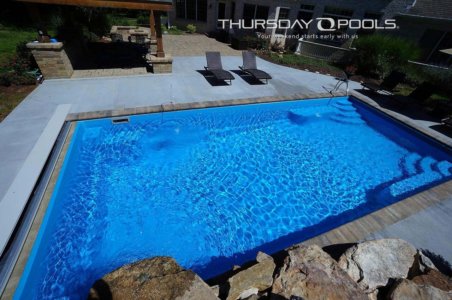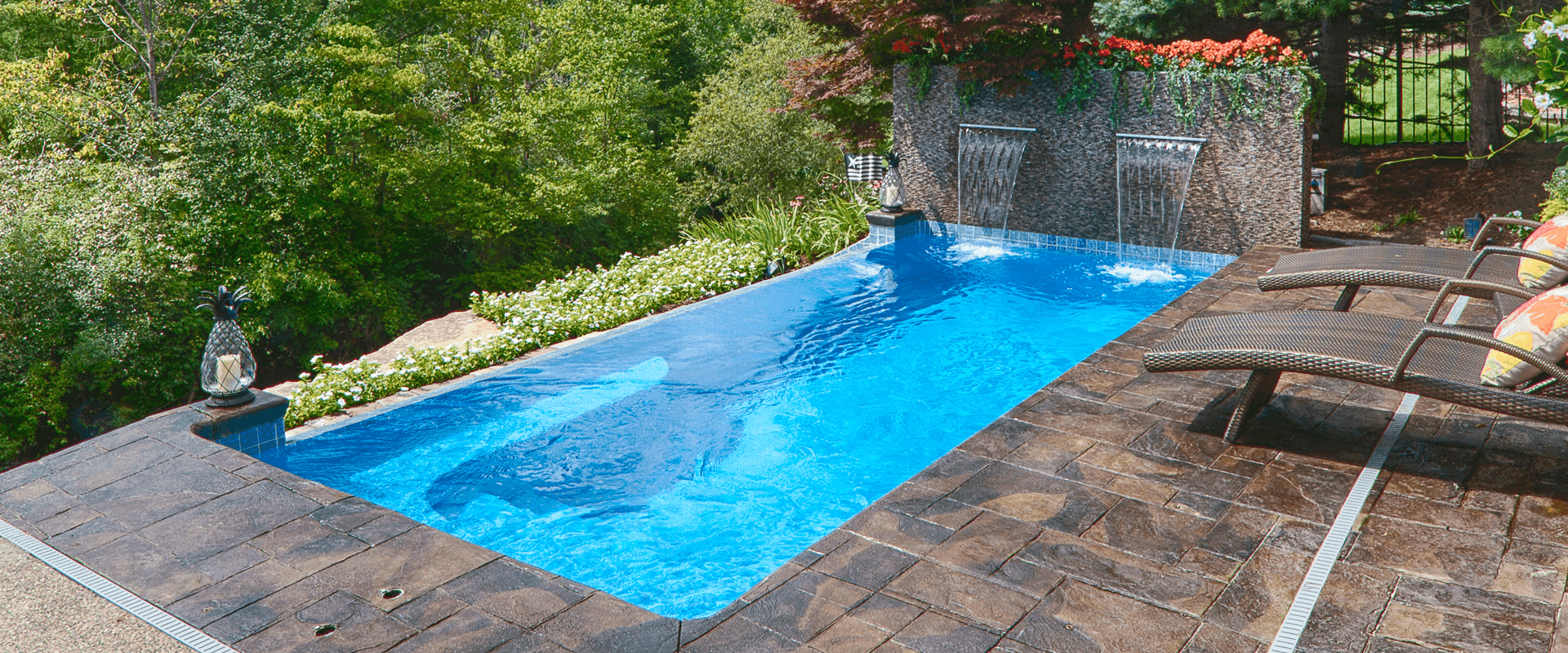877-929-7665
What Can I Expect for Fiberglass Pool Maintenance Cost?

Fiberglass pools bring hours of relaxation, family togetherness, social activity and exercise. What’s more, fiberglass pool owners find that maintaining a fiberglass pool is less expensive than other pool styles. So how much does it cost to maintain a fiberglass pool?
It depends on several factors, but the cost of maintaining your fiberglass pool will largely be determined by your pool equipment, size, and usage. In all cases, there is a cost to maintaining healthy and balanced water with chemical treatments, as well as a cost of technically maintaining your pool equipment so that it runs properly and efficiently. This blog focuses mainly on the cost of maintaining healthy and balanced water.
The cost of maintaining healthy and balanced pool water can vary considerably with sanitizing options, the addition of alternative sanitizing equipment, the amount of water volume, and swimmer load.
Your perfect score is zero!
The Langelier Saturation Index (LSI) is a formula for analyzing water balance. A negative LSI means your water is corrosive. A positive LSI means your water is scale-forming. A neutral LSI is ideal. The LSI formula analyzes the ratios of the following variables:
- Temperature
- pH
- Calcium Hardness
- Alkalinity
- Cyanuric Acid
- Total Dissolved Solids
Ideally balanced water has a saturation index of 0, but -.03 to +.03 is considered within the acceptable range. There are several types of chemicals you’ll need to maintain this ideal range.
Water chemistry costs for an average pool
Let’s consider a 15’ x 30’ inground pool. It will hold about 10,000 gallons of water. We’ll also assume the pool is equipped with a standard pool pump, filter, and chlorine feeder. Whether you’re filling your pool for the first time, or opening it for the season, balancing your water is the foundation for your overall water chemistry plan.
Balancers
Balancers include pH and calcium hardness increasers and decreasers and alkalinity stabilizers. Each water chemical manufacturer will provide you with recommendations and a suggested pool water maintenance schedule. Ask your pool builder for a recommendation on a brand, and follow that manufacturer’s guidelines for a routine water maintenance program that may also include sanitizer, shock and algaecide. Your water will likely not need all of these things, but here’s an average cost and use for each.
pH increaser/decreaser: If you need it, you’ll use about 20 ounces per 10,000 gallons of water.
Average monthly cost = $10.00
Calcium hardness increaser: If you need it, you’ll use about 5 pounds per 10,000 gallons of water.
Average monthly cost = $20.00
Stabilizer (Cyanuric acid): This comes in different strengths, but on average, if you use it, you’ll use about 2 ½ pounds per month for a 10,000 gallon pool.
Average monthly cost = $15.00
Because you might need some, but won’t use all of these, plan on:
Average monthly cost = $20.00
Sanitizer: Chlorine is the most widely used form of pool sanitizer. In the Midwest, on average, you can expect to use about 25 pounds of chlorine per month, which you can find online or at your local pool supply store, for anywhere between $65 and $99. Keep in mind that warmer water and warmer climates cause chlorine to dissolve more quickly, so that will affect your cost.
Average monthly cost = $80.00
Shock: Shocking your pool water rids it of bacteria, organic pollutants, and chloramines and it should be done weekly. Pool shock is available in chlorine and non-chlorine options and is typically packaged in one-pound bags. One pound of pool shock typically treats 10,000 gallons, and the cost averages about $3.00 per pound.
Average monthly cost = $12.00
Algaecide: You should also add algaecide to your pool about once a week. The standard recommendation for algaecide is two ounces per 10,000 gallons per week. So our 10,000-gallon pool would need approximately 8 ounces per month. A quart of good quality algaecide runs about $25.00. (Please note that algaecide dosages range greatly on recommendations, so always read the label carefully.)
Average monthly cost = $6.00
Total estimated average monthly water maintenance cost for a 10,000-gallon fiberglass pool = $118.00
Saving money on your pool maintenance costs
There are a few options available to reduce your chlorine use. For example, while chlorine is still the most widely used sanitizer, some pool owners feel like it’s too harsh. They’re moving to alternative sanitizing additions such as ozone and UV sanitizing systems that reduce the amount of chemicals required to maintain proper sanitization levels.
Salt systems also lower chlorine costs because they produce their own chlorine. It’s important to note that salt pools still require you to monitor your pool water chemistry closely and make adjustments as needed–chlorine levels can rise dramatically, especially in salt pools that are routinely kept covered and not used regularly.
An ounce of prevention
No matter what shape and size fiberglass pool you have, the water in your pool is constantly changing for all kinds of reasons–weather, swimmer load, water temperature, body oils, and a host of other variables–so your pool water chemistry is not something you can “set and forget,” even when you’re not using your pool. Consult a pool maintenance pro near you if you have questions about your water chemistry or are having trouble getting or keeping your water balanced. Regularly maintaining your pool water chemistry and following recommendations and guidelines will help keep your fiberglass pool maintenance costs to a minimum, help prevent equipment repairs, and prolong the life and beauty of your inground fiberglass pool, giving you a lifetime of enjoyment!
Get in the swim
If you don’t currently own an inground fiberglass pool but are considering purchasing one, get an estimate on a backyard swimming pool oasis of your very own. Thursday Pools fiberglass pools are handcrafted in Fortville, Indiana, and are manufactured to meet ISO 9001 and ISO 14001 standards for quality and environmental stewardship. Contact a dealer near you today.
